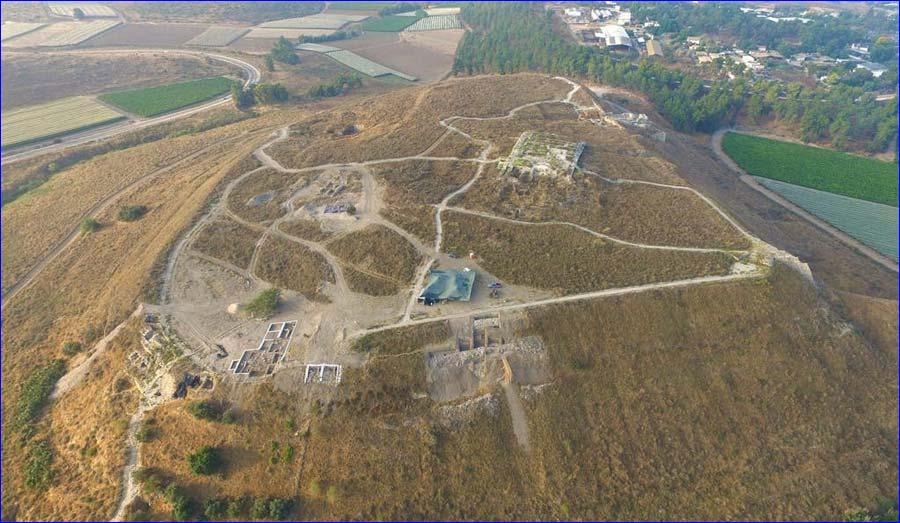


 The Lachish Expedition/Southern Adventist University)
The Lachish Expedition/Southern Adventist University)
"The area had already emerged as a clear site of a battlefield," said Hebrew University of Jerusalem Prof. Yosef Garfinkel, lead author of the recent research paper. "The top was excavated around 40 years ago and hundreds of flint stones and arrow heads were found. In addition, around 40% or 50% of the ramp has survived. Now we understand how it was built."
The Data Used To Understand The Lachish Siege Ramp
The Assyrians were well-equipped to win open-air battles, or penetrate any fortified city, reports Phys.org. They were experts in the art of the siege ramp, an elevated structure that was used to haul battering rams up to the walls of the enemy's fortified cities. The 2,700 year old siege ramp at Lachish is a surviving example of this expertise.
The team of archaeologists led by Professor Yosef Garfinkel and Dr. Madeleine Mumcuoglu of the Institute of Archaeology at the Hebrew University of Jerusalem, and Professors Jon W. Carroll and Michael Pytlik of Oakland University, USA, reconstructed how the Assyrians built the ramp and used it for the purposes of conquering Lachish.
The data that they consulted and used included biblical texts (2 Kings 18:9--19:37; 2 Chronicles 32; Isaiah 36--37), iconography (stone reliefs depicting Assyrian battle scenes) and Akkadian inscriptions, archaeological excavations, and 21st-century drone photography . They used photogrammetric analysis of aerial photographs, and created a digital map of the landscape, reports The Jerusalem Post .
"In the fourteenth year of King Hezekiah , King Sennacherib of Assyria marched against all the fortified towns of Judah and seized them," reads a passage from the 36th chapter of the Book of Isaiah. "From Lachish, the king of Assyria sent the Rabshakeh, with a large force, to King Hezekiah in Jerusalem." "None shall be weary nor stumble among them; none shall slumber nor sleep; neither shall the girdle of their loins be loosed, nor the latchet of their shoes be broken."(Isaiah 5:27)
Such descriptions were employed by the prophet Isaiah , to describe the soldiers of King Sennacherib, who were a ruthlessly efficient offensive juggernaut, akin to an ancient war machine. What is particularly interesting in this case is the deviance from the norm. Religious texts often rely on the fantastical, creating illusions, and can also be read as hagiographies. Not in this case, however. The biblical retelling of the Lachish siege, along with contemporaneous historical sources, all point to similar truths and narratives.

 Professor Yosef Garfinkel)
Professor Yosef Garfinkel)
The Spread of the Assyrians and the Siege of Lachish
By the end of the 8th century BC, the Assyrian Empire had made significant inroads into western Asia. After destroying the kingdom of Israel, the Assyrians controlled the Levant . The Judean King Hezekiah had formed an alliance with other rulers and refused to pay tribute to the Assyrians. But their resistance did not last long.
Lachish was strategically important, as it was a key stronghold in the hilly Shephelah region, reports Haaretz. It was the breadbasket of the Kingdom of Judah and was a longstanding target of the Assyrians. The fables of this town's siege and conquest are mentioned in Sennacherib's annals and depicted in graphic detail in the king's palace in the capital at Nineveh (in present-day northern Iraq).
Construction of the Legendary Assyrian Siege Ramp
The study showed that the ramp at Lachish was constructed using a whopping 3 million stones, which relied entirely on manpower. According to Garfinkel, a quarry was created 100 meters (328 feet) south of the site, to mine stones for the ramp. Most of the heaviest work was carried out by prisoners of war who were now slave labor. Probably, chains of laborers passed each stone from the quarry to the ramp area.
Each team of workers was probably composed of 100-200 men. They would chisel the stone and pass on building materials, moving roughly 200 stones a day. Each stone, on average, would weigh around 6.5 kilograms (14 pounds), and the entire ramp required 19,000 tons (19,300 kilograms) of material. It was, therefore, estimated that just 20-25 days were needed to raise the ramp. "Of course, we've only built a theoretical model of how it would have looked if everything went off without a hitch," Garfinkel cautions wisely. "We don't know if they worked at 100 percent efficiency."
The top of the ramp was covered with soil and paved with wooden planks, upon which the Assyrians would roll up their massive battering ram, made with a strong metal beam that swung like a pendulum. A metal chain, probably from the battering ram, was found by the team at the top of the ramp. The ram was built with shielding features, and a water tank in case it was set on fire by the enemy.
Ironically, the Assyrian Empire began to decline less than 100 years after the Lachish siege, with the rise of the Medes in Persia, and the Babylonians in southern Mesopotamia. There are other theories surrounding the sudden collapse of the Assyrian empire, like disease, megadrought, or a series of weak rulers. Whatever the reason, the Assyrians, at their peak, controlled one of ancient history's most lethal armies and the siege ramp made sacking the enemy easy and fast.

or register to post a comment.